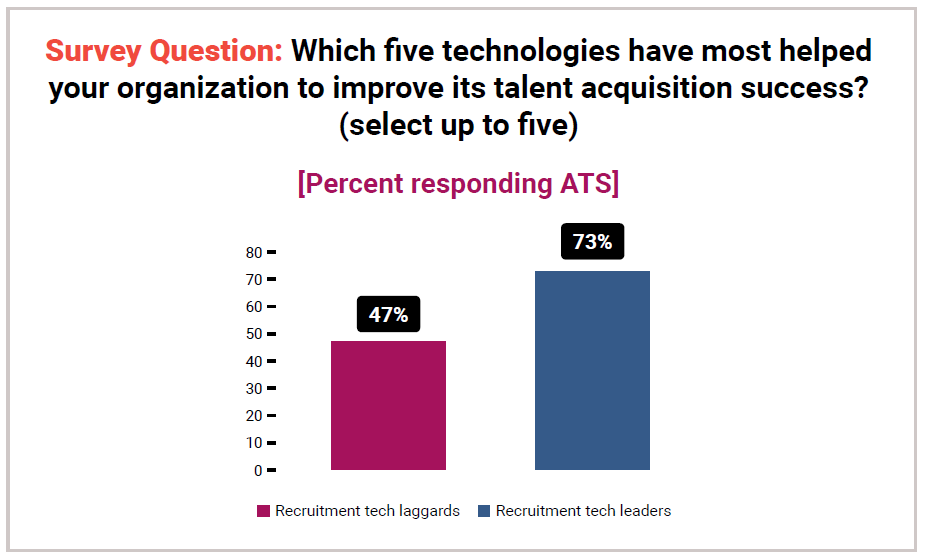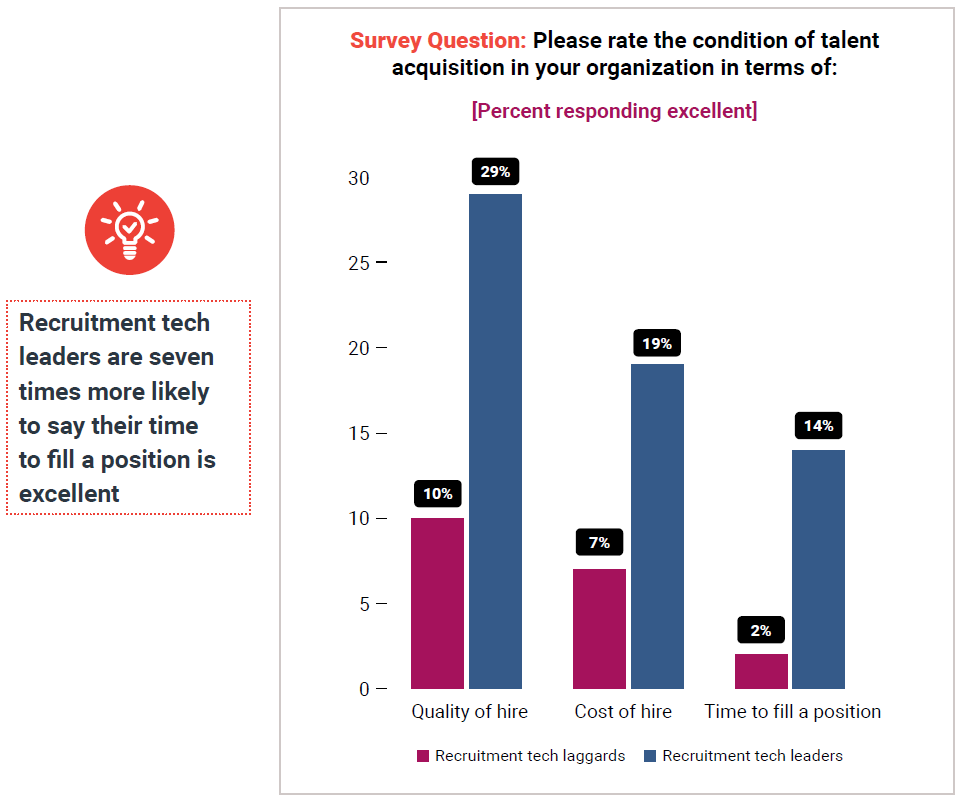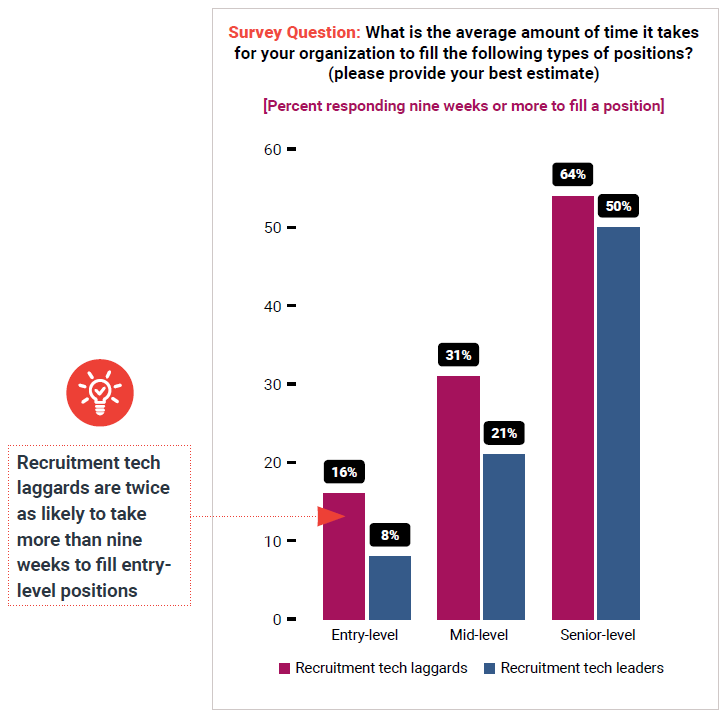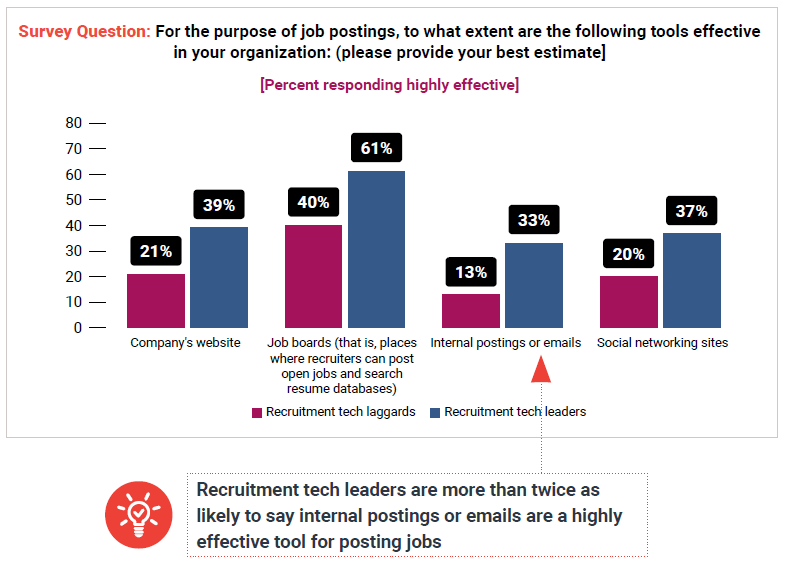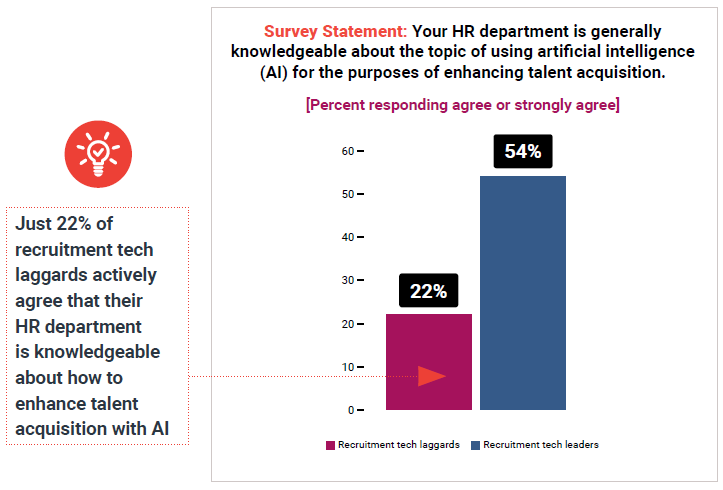To better understand the outcomes of effective recruitment technologies, we divided the survey into two cohorts:
- Recruitment technology leaders: Respondents who answered the question, “How would you rate the overall quality of talent acquisition technologies used in your organization?” as “good” or “excellent.”
- Recruitment technology laggards: Respondents who answered “average,” “below average,” or “poor” to the same question.
In the findings below, we shorten these to "recruitment tech leaders" and "recruitment tech laggards."

Recruitment tech leaders are more likely to say their ATS helps improve talent acquisition success
Recruitment tech leaders are not only more likely to use an ATS but are also more likely to say their ATS is one of the top five technologies that has helped improve talent acquisition in their organization. In short, they know how to make the best use of their ATS.
Recruitment tech leaders are nearly three times more likely than laggards to have excellent TA outcomes
Better, faster, cheaper—those three words summarize the differences between recruitment tech leaders and laggards. Recruitment tech leaders are three times more likely to say their quality of hires is excellent, more than twice as likely to say their cost of hire is excellent, and seven time more likely to say their time to fill is excellent.
The data suggests that proper usage of recruitment technology can have a positive impact on the recruitment outcomes organizations care most about.
Recruitment tech leaders are able to fill all employee-level positions faster
When it comes to time to fill positions, recruitment tech laggards are more likely to spend nine weeks or more filling entry-level, mid-level and senior-level positions. Nearly two-thirds (64%) of recruitment tech laggards say it takes nine weeks or more to fill senior-level positions, but just 50% of recruitment tech leaders say the same.
Recruitment tech leaders get much better value out of all the tools they use for posting jobs
Recruitment tech leaders are nearly twice as likely as laggards to say posting jobs on the company’s website is highly effective (39% vs. 21%). While both recruiting tech leaders and laggards use social networking sites to roughly the same degree, tech leaders are able to use them more effectively. It’s not enough to have a tool; you need the time, effort, and skill to make it worthwhile.
Recruitment tech leaders are more than twice as likely as laggards to have an HR department that is generally knowledgeable about the use of AI for talent acquisition
AI is beginning to be applied to various aspects of talent acquisition. One of the most important uses of AI is in the initial screening of applications. AI can also be used to find candidates who match a job description, to schedule interviews, or to communicate with applicants via a chatbot.
More than half (54%) of recruitment tech leaders agree or strongly agree their HR departments are generally knowledgeable about AI for the purposes of enhancing talent acquisition. By comparison, just 22% of recruitment tech laggards say the same.
